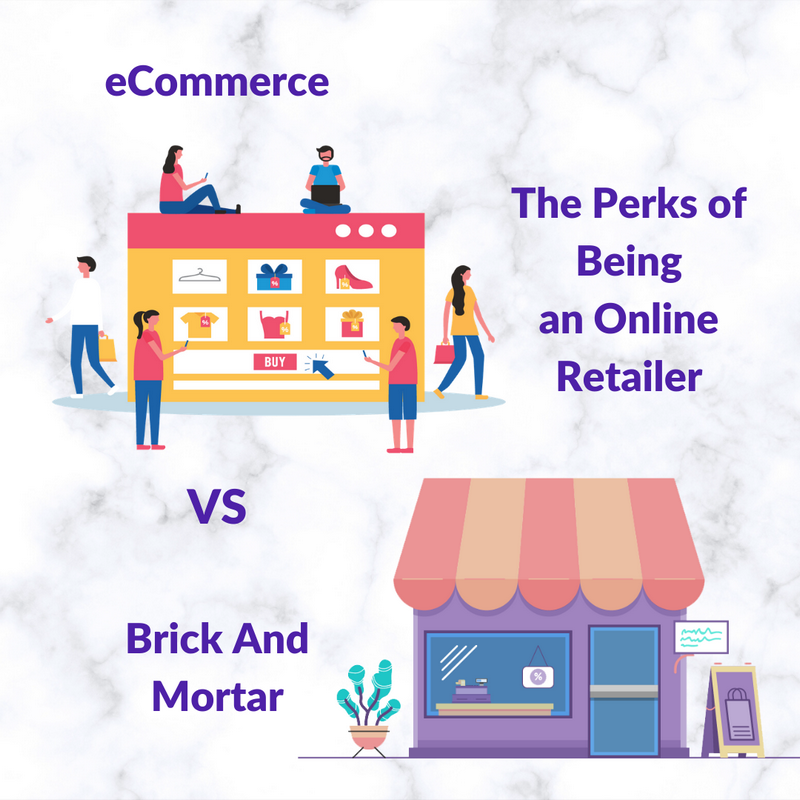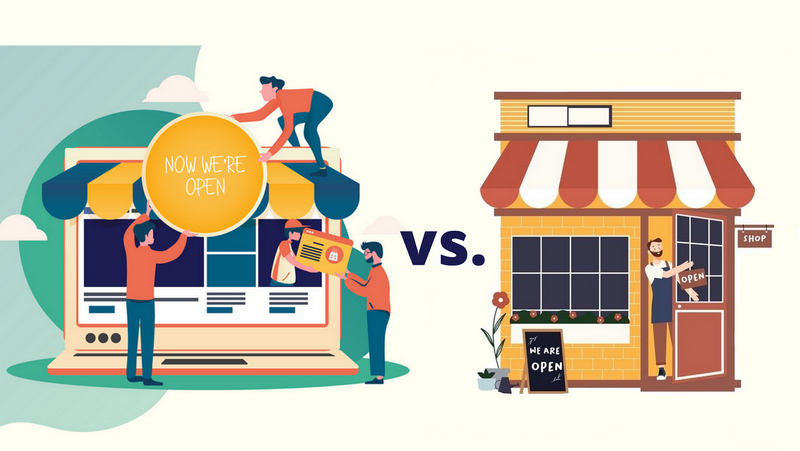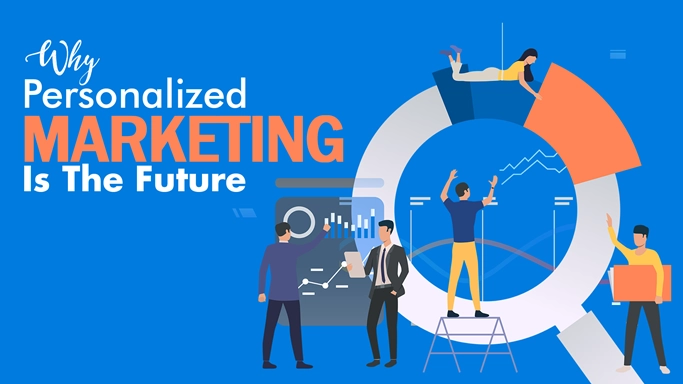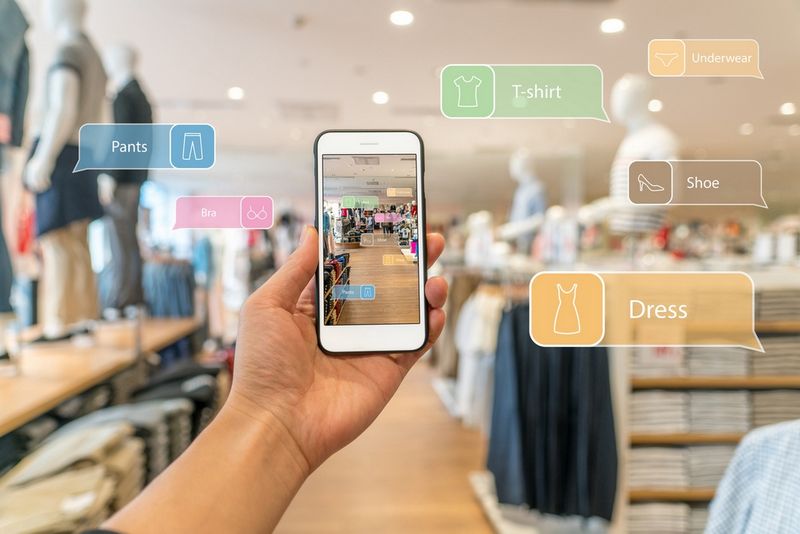- The Changing Landscape of Retail: From Brick and Mortar to Ecommerce
- The Transforming Retail Landscape
- Embracing the Shift
- From Brick and Mortar
- To Ecommerce
- New Opportunities Arise
- Challenges to Overcome
- The Rise of Ecommerce
- Traditional Retail Stores
- Adapting to Change
- Creating Seamless Shopping Experiences
- Enhancing Customer Engagement
- Embracing Technology Innovations
- Building Strong Online Presence
- Investing in Ecommerce Infrastructure
- Future of Retail
- FAQ:
- Why should I embrace the shift from brick and mortar to ecommerce?
- How can I ensure the security of my customers’ personal information when transitioning to ecommerce?
- What are some effective strategies to market an ecommerce business?
- What are some challenges I may face when transitioning from a brick and mortar store to ecommerce?
- What are some advantages of brick and mortar stores compared to ecommerce?
The Changing Landscape of Retail: From Brick and Mortar to Ecommerce
In today’s fast-paced and technology-driven world, the retail industry is undergoing a significant transformation. With the rise of retail technology and changing retail trends, brick and mortar stores are finding themselves facing new challenges and opportunities.
One of the key shifts in the retail landscape is the move towards omni-channel retail. As shopping preferences evolve, consumers are increasingly demanding a seamless shopping experience across multiple channels. This has led to the growth of ecommerce and digital commerce, with online retail becoming a dominant force in the industry.
While brick and mortar stores still play an important role in retail strategy, it is crucial for retailers to adapt to the changing consumer behavior and embrace the shift towards ecommerce. With the convenience and accessibility of online shopping, consumers are turning to digital platforms to fulfill their shopping needs.
However, it is important to note that the physical store still holds significance in the retail industry. The concept of click and collect, where customers can order products online and pick them up at a physical store, is gaining popularity. This hybrid approach combines the convenience of online shopping with the tangible experience of visiting a store.
Retailers need to understand the evolving shopping habits of their customers and find ways to create a seamless customer experience across all channels. This includes providing personalized recommendations, offering easy returns and exchanges, and creating a cohesive brand experience online and offline.
As a result of these changes, many traditional retailers are facing store closures. However, it is important for the retail industry to embrace the transformation and focus on innovative strategies to thrive in this new landscape. By leveraging retail technology, embracing ecommerce growth, and understanding consumer preferences, retailers can stay competitive and capture new opportunities in the evolving retail industry.
To sum up, the retail industry is experiencing a significant transformation from brick and mortar to ecommerce. Retailers need to adapt to changing consumer behavior, embrace new technologies, and create a seamless customer experience to stay relevant in this evolving landscape.
The Transforming Retail Landscape
As shopping habits continue to shift and store closures become a common sight, the retail industry is undergoing a significant transformation. The rise of ecommerce growth and the popularity of online shopping have paved the way for the evolution of the retail landscape.
Retail technology plays a crucial role in this retail transformation, enabling businesses to adapt to changing consumer behavior and meet their shopping preferences. With the convenience of online retail, brick and mortar stores are now being challenged to enhance the customer experience and provide a seamless integration of physical and digital commerce.
One of the emerging retail trends is the use of click and collect services, allowing customers to order products online and pick them up at a nearby physical store. This fusion of online and offline shopping provides a unique shopping experience that caters to the needs and preferences of modern consumers.
As the retail industry continues to evolve, it is essential for businesses to develop a strong retail strategy that embraces the shifting landscape. By leveraging the power of ecommerce and incorporating innovative retail technologies, companies can stay ahead of the curve and successfully navigate the changing retail landscape.
Embracing the Shift
In today’s rapidly changing retail landscape, brick and mortar stores are facing numerous challenges. From the rise of ecommerce and digital commerce to changing consumer behavior and shopping preferences, retailers need to adapt to stay relevant in the market.
Retail technology is playing a crucial role in this evolution. With the increasing popularity of online shopping, many retailers are embracing omni-channel retail strategies, which seamlessly integrate physical stores with online platforms. This allows customers to have a consistent and personalized shopping experience across various channels.
Store closures have become a common occurrence as retailers shift their focus to online retail and ecommerce. However, it is important to note that physical stores still hold value in the retail industry. They provide customers with the opportunity to see and touch products before making a purchase, enhancing the overall customer experience.
One of the emerging trends in retail is the click and collect service. This service combines the convenience of online shopping with the immediacy of in-store pickup. Customers can place orders online and collect them from a nearby physical store at their convenience. This not only saves time for customers, but also helps retailers reduce shipping costs and improve operational efficiency.
The retail industry is undergoing a significant transformation, and those who embrace the shift from brick and mortar to ecommerce are better positioned for success. By understanding and adapting to changing consumer behavior and preferences, retailers can stay ahead of the competition and thrive in the digital age.
- Key Points:
- – Retail technology is driving the evolution of the retail industry
- – Store closures are a result of the shift towards online retail and ecommerce
- – Physical stores still play a valuable role in enhancing the customer experience
- – Click and collect services combine convenience with the immediacy of in-store pickup
- – Embracing the shift to ecommerce is crucial for retailers to stay competitive
From Brick and Mortar
The retail landscape has drastically transformed with the rise of online shopping. Shopping habits have shifted, leading to store closures and a greater reliance on retail technology. In response to changing shopping preferences and consumer behavior, retailers have embraced omni-channel retail, combining online retail with physical brick and mortar stores to create a seamless shopping experience.
One popular omni-channel trend is click and collect, where customers can order products online and pick them up at a nearby physical store. This allows consumers to enjoy the convenience of online shopping while still having the option to interact with the products in person. The integration of brick and mortar and digital commerce has revolutionized the retail industry and contributed to the growth of ecommerce.
In this era of retail evolution, the customer experience is key. Retailers are investing in technology and implementing retail strategies to enhance the shopping experience. Personalized recommendations, easy-to-navigate websites, and efficient fulfillment options are just a few examples of how retailers are prioritizing customer satisfaction.
As retail trends continue to evolve and the retail industry undergoes transformation, it is clear that the physical store is no longer the sole focus. Retailers are adapting to the changing landscape and embracing the opportunities of ecommerce to reach a wider audience and cater to shifting consumer demands.
To Ecommerce
Are you tired of the hassle of traditional brick and mortar shopping? Embrace the convenience of online shopping and experience the future of retail with Ecommerce. In today’s rapidly changing retail industry, the use of retail technology and the shift in shopping habits towards digital commerce have given rise to the transformation of the retail landscape.
Gone are the days of relying solely on physical stores. The retail evolution is happening before our eyes, and it’s time for businesses to adapt their retail strategy to thrive in this new era. With Ecommerce, you can tap into the power of online retail and capitalize on the growth of ecommerce.
Why limit yourself to the constraints of a single physical store when you can have an omni-channel retail presence? With Ecommerce, you can reach customers wherever they are, breaking free from the limitations of geographical boundaries. With the growing trend of store closures, it’s clear that the future of retail lies in the digital realm.
By embracing Ecommerce, you can provide a seamless shopping experience to your customers. From click and collect services to personalized recommendations, Ecommerce enables you to enhance the customer experience and cater to changing consumer behavior and shopping preferences.
So, join the retail transformation and unlock the potential of Ecommerce. Embrace the shift towards online shopping and stay ahead of the game in the fast-paced world of retail. Don’t get left behind – make Ecommerce a cornerstone of your business strategy.
New Opportunities Arise
The retail industry is currently undergoing a massive transformation due to changing shopping habits and the rapid growth of digital commerce. With the rise of online shopping, many brick and mortar stores are facing challenges in attracting customers and staying relevant in the ever-evolving world of ecommerce.
However, this shift also presents new opportunities for retailers to embrace the power of technology and adapt to the changing consumer behavior. Omni-channel retail has become a key focus for many businesses, enabling them to integrate their physical stores with their online presence and provide customers with a seamless shopping experience.
The ecommerce growth has led to store closures and a decline in foot traffic for traditional retail establishments, but it has also opened doors to innovative retail strategies. Retailers can now leverage the power of data analytics and consumer insights to create personalized shopping experiences tailored to individual preferences.
One of the key trends in the retail industry is the rise of online retail, where customers can browse and purchase products from the comfort of their own homes. Retailers can further enhance this experience by offering convenient options such as click and collect, allowing customers to order online and pick up their purchases at a nearby physical store.
Furthermore, the focus on customer experience has become paramount in the retail industry. With the help of retail technology, retailers can now create immersive and interactive shopping environments that cater to the preferences of their target audience.
In conclusion, while the transformation of the retail landscape may bring challenges for traditional brick and mortar stores, it also presents new opportunities for retailers to embrace ecommerce and adapt their retail strategies to meet the changing needs and preferences of consumers. By embracing digital innovation, retailers can thrive in the evolving world of retail and create a successful omni-channel presence.
Challenges to Overcome
In today’s rapidly changing retail landscape, consumer behavior and shopping habits have undergone a significant shift. The retail industry is adapting to this new era of ecommerce, where online shopping has experienced exponential growth. Retailers are faced with the challenge of reevaluating their retail strategy and adapting to changing shopping preferences.
One of the biggest challenges for retailers is the decline in physical store footfall. With the retail evolution, more and more customers are turning to online shopping, resulting in store closures and a decrease in brick and mortar sales. Retailers must find ways to bridge the gap between the physical and digital commerce to provide customers with a seamless and satisfying customer experience.
Another challenge is keeping up with the latest retail technology and trends. With the rise of online retail and the increasing demand for omni-channel retail, retailers must invest in new technologies and strategies to stay competitive. This may include implementing advanced analytics, artificial intelligence, and personalized marketing tools to better understand and engage with customers.
Furthermore, retailers must adapt to the changing expectations of customers. Today’s shoppers have higher expectations when it comes to convenience, speed, and personalized experiences. Retailers must find innovative ways to provide a seamless and personalized customer journey across multiple channels, from online to in-store, to keep up with the evolving consumer demands.
In conclusion, the retail industry is facing numerous challenges in embracing the shift from brick and mortar to ecommerce. Retailers must adapt their retail strategies, invest in new technologies, and prioritize the customer experience to thrive in this digitally-driven era. By addressing these challenges, retailers can navigate the retail transformation and unlock new opportunities for growth in the evolving retail landscape.
The Rise of Ecommerce
As the retail industry continues to undergo a massive transformation, ecommerce has emerged as a dominant force. Retailers are reevaluating their retail strategy to adapt to the changing shopping habits of consumers.
Ecommerce growth has been driven by various factors, including advancements in retail technology and the convenience of online shopping. Customers can now shop from the comfort of their own homes, choosing from a wide range of products and enjoying a seamless customer experience.
This shift towards ecommerce has also led to a significant decline in physical store sales, resulting in store closures and a reassessment of traditional brick and mortar retail models. However, retailers have recognized the need to embrace the online retail trend and have started incorporating ecommerce into their omnichannel retail strategies.
Understanding consumer behavior and shopping preferences is crucial for retailers to succeed in this new era of retail. Retailers must adapt to the changing landscape by leveraging ecommerce platforms and technologies to enhance the customer experience.

The retail industry is undergoing a rapid transformation, and the rise of ecommerce is at the forefront of this evolution. By embracing this shift and incorporating ecommerce into their retail strategies, retailers can stay ahead of the competition and cater to the changing needs and preferences of their customers.
Traditional Retail Stores
Traditional retail stores have long been a cornerstone of the retail industry, but they are now facing significant challenges in the evolving retail landscape. As ecommerce continues to thrive, retailers need to adapt their retail strategy to include an online presence. By embracing ecommerce, traditional retail stores can extend their reach beyond their physical locations and tap into the growing online market.
One popular approach for traditional retail stores to integrate ecommerce is through the use of click and collect services. This allows customers to browse and purchase items online, and then collect them from a physical store location. By offering this convenience, retailers can cater to changing shopping habits and provide a seamless customer experience by combining the ease of online retail with the benefits of a physical store.
Retail technology also plays a crucial role in the transformation of traditional retail stores. By leveraging technology such as mobile apps, virtual reality, and artificial intelligence, retailers can enhance the customer experience and create a personalized shopping journey. These technological advancements are driving retail trends towards omni-channel retail, where customers can seamlessly switch between online and offline channels without any disruption.
Consumer behavior and shopping preferences are also contributing to the retail industry’s evolution. With the increasing popularity of online shopping, consumers have come to expect convenience, competitive pricing, and a wide range of product options. Traditional retail stores must adapt to these changing preferences and find ways to offer a compelling value proposition that goes beyond the convenience of online shopping.
The retail transformation from brick and mortar to ecommerce is a reflection of the tremendous growth of digital commerce. As more and more consumers embrace online shopping, traditional retail stores must find innovative ways to stay relevant and compete in this digital era. By embracing ecommerce and leveraging the power of technology, traditional retail stores can evolve and thrive in the changing retail landscape.
Adapting to Change
In the ever-changing retail landscape, keeping up with the latest retail trends and understanding consumer behavior is crucial for businesses. As shopping habits continue to shift from brick and mortar stores to online platforms, retailers must reevaluate their retail strategy to stay relevant.
The retail industry has undergone a significant retail evolution in recent years, with the rise of online shopping leading to store closures and a decline in foot traffic. However, this shift presents new opportunities for businesses to embrace ecommerce and reach a wider audience.
One key aspect of adapting to this change is enhancing the customer experience across all touchpoints. With the growth of omni-channel retail, customers expect a seamless shopping experience, whether they are in a physical store or browsing online. Providing options such as click and collect services allows customers to shop at their convenience and pick up their purchases at a physical store.
Retailers also need to understand customers’ shopping preferences and leverage retail technology to meet their needs. Utilizing ecommerce platforms and digital commerce solutions can help businesses tap into the growing ecommerce market and maximize their online presence.
The retail transformation is an ongoing process, and businesses need to continuously adapt to remain competitive. By staying informed about retail trends, understanding consumer behavior, and embracing the shift from brick and mortar to ecommerce, retailers can position themselves for success in the ever-changing retail landscape.
Creating Seamless Shopping Experiences
In today’s retail landscape, digital commerce has become a driving force behind the transformation of the industry. With the rise of ecommerce and the shift in shopping habits, retailers are adapting their strategies to embrace the omni-channel retail approach. Retailers are utilizing retail technology to create seamless shopping experiences that cater to the evolving needs of consumers.
The retail industry is undergoing a major evolution, as the growth of ecommerce continues to reshape the way people shop. Traditional brick and mortar stores are facing challenges due to changing consumer behaviors and preferences. With store closures becoming a common occurrence, retailers are focusing on enhancing their online retail presence to stay competitive in the digital age.
One of the key elements of a successful retail strategy is providing an exceptional customer experience. This involves understanding the needs and preferences of customers and leveraging technology to deliver personalized and efficient shopping experiences. Retailers are leveraging data analytics and AI-powered tools to track consumer behavior and make informed decisions to optimize their offerings.
One of the retail trends that has gained popularity in recent years is click and collect, which allows customers to order products online and pick them up at a physical store location. This provides convenience and flexibility for shoppers, as they can choose their preferred delivery options. By integrating online and offline channels, retailers are able to provide a seamless shopping experience that meets the demands of today’s consumers.
Enhancing Customer Engagement
In the fast-paced world of retail, staying ahead of the curve is crucial. As ecommerce growth continues to reshape the retail industry, businesses must adapt their strategies to meet the changing needs and preferences of consumers. This requires a deep understanding of key retail trends and an evolution in the way customer engagement is approached.
Gone are the days when a physical store was the only touchpoint for customers. Today, the customer experience extends far beyond the store walls. With the rise of online retail and the convenience it offers, many traditional brick and mortar stores have been forced to close their doors. To thrive in this new era of retail, businesses must embrace digital commerce and leverage the power of ecommerce.
Understanding consumer behavior and shopping preferences is essential for success in the evolving retail landscape. The transformation of retail is driven by technology and the increasing use of digital devices. Consumers are now in control of their shopping habits, with the ability to research products, compare prices, and make purchases online. Businesses that prioritize understanding and catering to these shopping habits will be able to enhance customer engagement and drive sales.
One example of a trend that reflects changing customer preferences is the rise of click and collect. This omni-channel retail strategy allows customers to order products online and collect them in-store, merging the convenience of online shopping with the immediacy of physical stores. By offering click and collect options, businesses can engage customers in both the digital and physical realms, providing a seamless shopping experience.
As the retail industry continues to evolve, businesses must adopt new retail technologies to stay competitive. From augmented reality in fitting rooms to personalized product recommendations, these technologies can enhance the customer experience and drive engagement. By embracing the shift from brick and mortar to ecommerce, businesses can not only survive but thrive in the transforming retail landscape.
Embracing Technology Innovations
In today’s rapidly changing retail landscape, it is crucial for businesses to embrace technology innovations in order to stay relevant and meet the evolving needs of customers. As shopping habits and preferences shift towards online shopping, traditional physical stores need to adapt and integrate ecommerce solutions into their retail strategies.
Retail trends indicate a clear retail evolution towards a more digital and interconnected shopping experience. Click and collect services, for example, have gained popularity in recent years, allowing customers to make purchases online and pick them up at a physical store location. This omni-channel retail approach bridges the gap between online and offline shopping, providing convenience and flexibility to consumers.
The retail industry is going through a significant transformation, with the rise of ecommerce being a major driver of change. Online shopping has experienced tremendous growth, fueled by advancements in digital commerce platforms and the increasing accessibility of internet and mobile devices. To thrive in this new era, retailers must adopt a comprehensive retail strategy that leverages technology to enhance customer experience and engage with consumers in meaningful ways.
While the emergence of ecommerce has led to store closures for many brick and mortar retailers, it has also created opportunities for businesses to leverage retail technology to streamline operations, improve efficiency, and reach a wider customer base. From sophisticated inventory management systems to personalized marketing strategies, technology innovations have the power to revolutionize the retail industry and drive success in the digital age.
Building Strong Online Presence
In today’s retail landscape, consumer behavior is rapidly shifting towards online shopping. With the exponential growth of ecommerce, retail transformation is inevitable. To stay competitive, businesses need to adapt their retail strategy to embrace the digital commerce era.
Online retail is no longer just a trend, but a necessity. Shopping preferences and habits have evolved, and consumers now prioritize the convenience and flexibility of online shopping. By establishing a robust online presence, businesses can tap into this growing market and cater to the changing needs of customers.
Retail technology plays a crucial role in this retail evolution. With tools and platforms that enable seamless online transactions and enhance the customer experience, businesses can create a user-friendly interface that drives sales and fosters customer loyalty.
With the increasing number of store closures and the decline of brick and mortar retail, businesses that fail to adapt to the changing retail trends risk being left behind. A physical store alone is no longer enough; businesses need to embrace digital strategies such as click and collect, allowing customers to order online and pick up their purchases in-store.
Building a strong online presence is essential for businesses in the retail industry. By focusing on digital commerce, businesses can expand their reach, cater to changing consumer preferences, and thrive in the ever-evolving retail landscape.
Investing in Ecommerce Infrastructure
In today’s rapidly changing retail landscape, consumer behavior and shopping preferences have shifted dramatically. With the advancement of retail technology and the rise of digital commerce, ecommerce has seen significant growth, posing a challenge to traditional physical stores. Retailers must adapt to this new reality with an omni-channel retail strategy that prioritizes the online customer experience.
One key aspect of this strategy is implementing click and collect services, which allow customers to order products online and pick them up at a physical store. This approach not only caters to the convenience-focused shopping habits of modern consumers but also helps bridge the gap between online and offline shopping experiences. By investing in ecommerce infrastructure, retailers can seamlessly integrate their online and physical store operations to enhance the overall customer experience.
Another driving force behind the need for ecommerce infrastructure investment is the increasing number of store closures. As the retail industry undergoes a significant transformation, many brick and mortar stores are struggling to stay afloat. By diversifying their operations and focusing on ecommerce, retailers can adapt to the changing retail landscape and remain competitive in the market.
Investing in ecommerce infrastructure is a critical step in strategically positioning a retail business for success in the future. By embracing the growth of ecommerce and leveraging technology to create a seamless shopping experience, retailers can stay ahead of the curve and meet the evolving needs of consumers.
Future of Retail
The future of retail is being shaped by the continued growth of ecommerce and the adoption of omni-channel retail strategies. With changing consumer behavior and the rise of online shopping, brick and mortar stores are facing challenges. However, there are opportunities for traditional retailers to embrace this retail transformation and stay ahead of the trends.
One key trend is the emergence of click and collect services, where customers can order products online and pick them up in-store. This not only provides convenience for shoppers but also helps to drive foot traffic to physical stores. Store closures may be happening, but by incorporating digital commerce and offering a seamless customer experience across online and offline channels, retailers can adapt to shifting shopping habits.
Retail technology is also playing a crucial role in the future of retail. From innovative store layouts to personalized recommendations, retailers are leveraging technology to enhance the customer experience and create a competitive edge. The retail industry is evolving, and those who stay ahead of the curve by leveraging data-driven insights and staying attuned to changing shopping preferences will thrive in the digital era.
The growth of ecommerce is undeniable, but it doesn’t mean the end of physical stores. It’s about finding the right balance between online retail and maintaining a strong physical presence. This retail evolution requires retailers to revise their retail strategies and explore new ways to engage with customers. Whether it’s offering unique in-store experiences or utilizing advanced technologies like augmented reality, the future of retail lies in providing a seamless and engaging shopping journey.
As the retail landscape continues to transform, the future of retail is bright for those who are willing to embrace change and adapt to the evolving needs and expectations of customers. By understanding the power of ecommerce growth and investing in retail technology, retailers can shape the future and thrive in the ever-changing retail industry.
FAQ:
Why should I embrace the shift from brick and mortar to ecommerce?
The shift from brick and mortar to ecommerce offers several benefits. Firstly, it allows you to reach a global audience and expand your customer base beyond your local area. Secondly, it provides convenience for your customers, allowing them to shop from the comfort of their own homes. Lastly, ecommerce often has lower overhead costs compared to brick and mortar stores, allowing for higher profit margins.
How can I ensure the security of my customers’ personal information when transitioning to ecommerce?
Ensuring the security of your customers’ personal information is crucial in ecommerce. You can start by obtaining SSL certification for your website to encrypt sensitive data. Additionally, implement secure payment gateways and follow recommended security practices such as regularly updating your website and using strong passwords. It is also important to educate your customers about online security measures and reassure them of the safety of their information when making purchases on your website.
What are some effective strategies to market an ecommerce business?
There are several effective strategies to market an ecommerce business. Firstly, invest in search engine optimization (SEO) to improve your website’s visibility in search engine results. Secondly, utilize social media platforms to promote your products and engage with your target audience. You can also consider influencer partnerships, email marketing campaigns, and content marketing to further enhance your marketing efforts. It is important to regularly analyze and tweak your marketing strategies based on the results to ensure ongoing success.
What are some challenges I may face when transitioning from a brick and mortar store to ecommerce?
Transitioning from a brick and mortar store to ecommerce comes with its own set of challenges. One major challenge is establishing a strong online presence and attracting customers to your website. Additionally, logistics and shipping can be complex, especially if you are dealing with international customers. Another challenge is maintaining the personalized touch and customer service that is often expected from brick and mortar stores. Finally, there may be a need for additional technical skills and resources to manage and maintain your ecommerce platform.
What are some advantages of brick and mortar stores compared to ecommerce?
Brick and mortar stores offer several advant






